Exploring the Different Styles of Horse Bits
Share
Exploring the Different Styles of Horse Bits: A Guide for Equestrians
When it comes to horseback riding, the bit is one of the most crucial pieces of tack, serving as a primary point of communication between rider and horse. However, with so many different styles of horse bits available, selecting the right one can be daunting. Each style has its unique design, purpose, and effect on the horse. This blog will explore the most common types of horse bits, helping you understand their differences and how they influence your horse's performance and comfort.
1. Snaffle Bits
The snaffle bit is one of the most commonly used types and is often recommended for beginners due to its simplicity and gentleness. Snaffle bits apply direct pressure on the horse's mouth, primarily on the tongue, bars, and corners of the mouth.
Types of Snaffle Bits:
- Loose Ring Snaffle: This bit allows the rings to move freely through the bit's mouthpiece. The movement of the rings helps prevent the horse from leaning on the bit, encouraging a softer mouth.
- Eggbutt Snaffle: Unlike the loose ring, the eggbutt snaffle has fixed rings, reducing the pinching effect on the horse's lips. This bit is stable and provides consistent pressure, making it a great choice for horses with sensitive mouths.
- D-Ring Snaffle: The D-shaped rings prevent the bit from rotating, offering more lateral control. It's commonly used in disciplines like dressage and jumping.
- Full Cheek Snaffle: This bit features extended arms (cheeks) that prevent the bit from sliding through the horse's mouth, providing extra lateral guidance, especially useful for young or green horses.
2. Curb Bits
Curb bits are leverage bits, meaning they apply pressure not only on the horse's mouth but also on the poll (the area behind the ears) and the chin through the curb chain or strap. These bits are more advanced and are typically used by experienced riders who have developed soft, controlled hands.
Types of Curb Bits:
- Pelham Bit: The Pelham combines the action of both a snaffle and a curb, with two sets of reins attached to the bit. One set provides direct pressure, while the other offers leverage. This versatility makes the Pelham popular in various disciplines, including show jumping and eventing.
- Weymouth Bit: Often used in dressage, the Weymouth is a severe bit that works in conjunction with a bradoon (a type of snaffle). It provides refined communication, allowing the rider to influence the horse's head carriage and movement with precision.
- Western Curb Bit: Commonly used in Western riding, this bit typically features a high or low port (the curve in the center of the mouthpiece) that applies pressure to the horse's palate. The shanks vary in length, affecting the leverage and, therefore, the severity of the bit.
3. Hackamores
While not technically a bit, the hackamore is worth mentioning. Hackamores work without a mouthpiece, applying pressure to the horse's nose, chin, and poll. They're ideal for horses with sensitive mouths or those recovering from dental issues.
Types of Hackamores:
- Mechanical Hackamore: This style uses leverage similar to a curb bit, with shanks that apply pressure to the nose and chin. It’s essential for the rider to have gentle hands, as the mechanical hackamore can be quite severe.
- Bosal Hackamore: A traditional piece of Western tack, the bosal is a gentler option made from braided rawhide or leather. It applies pressure to the nose and works well for young horses being trained in the vaquero tradition.
4. Combination Bits
Combination bits are hybrids that incorporate elements of both snaffle and curb bits, often combined with nosebands or hackamores. These bits provide multiple points of contact, giving the rider nuanced control over the horse.
Types of Combination Bits:
- Gag Bit: A type of snaffle bit that works with a leverage mechanism, applying pressure to the horse's mouth and poll simultaneously. It's often used in high-intensity disciplines like show jumping.
- Three-Ring Bit (Dutch Gag): This bit offers varying levels of leverage, depending on which ring the reins are attached to. It’s popular in eventing and show jumping, where precise control and adjustments are needed.
5. Specialty Bits
Some bits are designed for specific purposes or to address particular issues with a horse's behavior or anatomy.
Types of Specialty Bits:
- Mullen Mouth Bit: This bit has a straight bar mouthpiece that applies even pressure across the horse’s tongue and bars, making it a mild option for horses with sensitive mouths.
- Waterford Bit: Known for its flexibility, the Waterford bit has a chain-like mouthpiece that molds around the horse's mouth, preventing them from leaning or grabbing onto the bit.
- Kimberwicke Bit: A versatile bit that offers moderate leverage. The Kimberwicke is often used for horses that need more control than a snaffle can provide but less than a curb.
Choosing the Right Bit
Selecting the appropriate bit depends on various factors, including the horse's level of training, temperament, and the rider's experience. It's important to consider the horse's comfort and responsiveness when choosing a bit. In some cases, working with a knowledgeable trainer or bit specialist can provide invaluable guidance.
Conclusion
Understanding the different styles of horse bits is crucial for any equestrian. Each bit has a specific purpose, and the right choice can enhance the communication between horse and rider, leading to a more harmonious partnership. Always prioritize your horse's comfort and well-being when selecting a bit, and don't hesitate to experiment with different styles to find the perfect fit for your needs.



